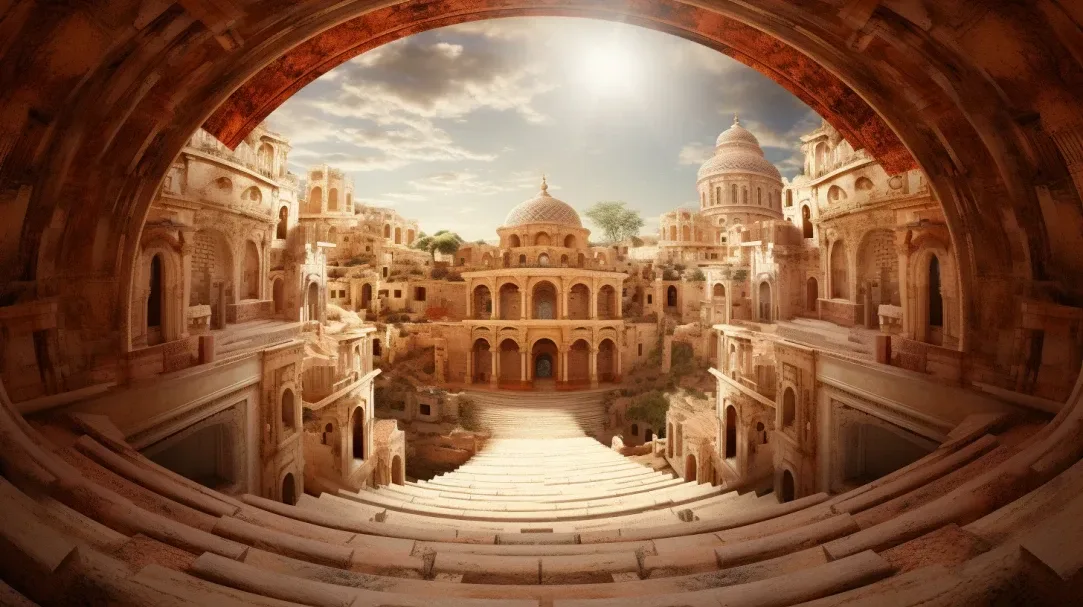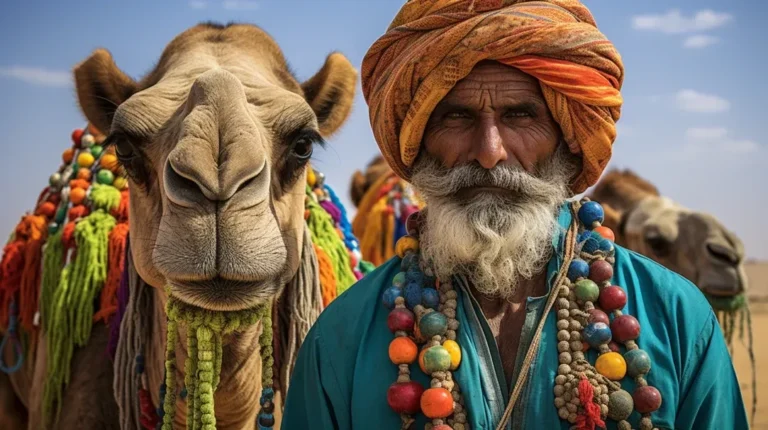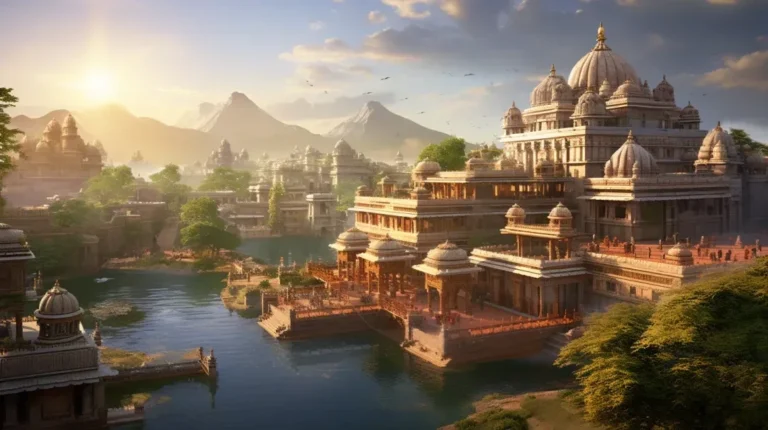Cultural Kaleidoscope: Immersive Journeys In World Heritage
In ‘Cultural Kaleidoscope: Immersive Journeys in World Heritage,’ we embark on a captivating exploration of the world’s most treasured cultural sites.
This immersive journey takes us beyond the surface, delving into the rich tapestry of history, traditions, and architectural marvels that shape our global heritage.
From ancient ruins that unearth the mysteries of the past to majestic landmarks that symbolize cultural identity, this book offers a comprehensive view of the diverse treasures that our world has to offer.
Tracing traditions and experiencing living heritage, we gain a deeper understanding of the practices and rituals that have withstood the test of time.
By celebrating the unity and diversity found in cultural festivals and world heritage cities, we witness history come alive in a truly captivating way.
Join us on this enlightening expedition, where every page is a window into the captivating kaleidoscope of world heritage.
Key Takeaways
- Immersive journeys in world heritage offer valuable insights into the lives and achievements of our ancestors.
- Cultural kaleidoscope showcases the brilliance and innovation of human ingenuity in architectural marvels and sacred sites.
- Preservation and conservation of landmarks play a crucial role in safeguarding cultural heritage and connecting people to their roots.
- Living heritage and cultural practices contribute to the diversity of global heritage, celebrating unity and creating a sense of shared identity.
Exploring Ancient Ruins: Unearthing the Past
The exploration of ancient ruins offers a captivating glimpse into the past. These remnants of civilizations long gone hold immense historical and cultural significance, providing valuable insights into the lives and achievements of our ancestors. By studying the architecture, artifacts, and structures left behind, we can piece together a puzzle of the past, uncovering stories and unraveling mysteries.
Ancient ruins also serve as a testament to the ingenuity and craftsmanship of ancient civilizations, showcasing their advanced knowledge and skills in engineering, art, and culture. Moreover, these sites often hold spiritual and sacred importance, offering a connection to the beliefs and practices of ancient societies.
Exploring ancient ruins allows us to appreciate the rich tapestry of human history and fosters a deeper understanding and appreciation for the diverse cultures that have shaped our world.
Majestic Landmarks: Icons of Cultural Identity
Majestic landmarks hold a profound symbolic significance for communities around the world. They represent the cultural identity and heritage of those communities. These iconic structures serve as tangible reminders of a society’s history, traditions, and values. They are often revered as national treasures.
Furthermore, the preservation and conservation of these landmarks play a crucial role. It ensures their physical survival and also contributes to the protection and promotion of cultural heritage. By preserving these landmarks, a sense of pride and belonging is fostered within local communities.
Symbolic Significance of Landmarks
Landmarks hold significant symbolic value as icons of cultural identity. These iconic structures or sites often embody the history, values, and aspirations of a particular community or nation. They serve as visual representations of cultural heritage, reminding people of their shared past and shaping their collective identity.
Landmarks can evoke a sense of pride, belonging, and unity among a population. They become powerful symbols that transcend geographical boundaries and language barriers, attracting visitors from all over the world who seek to understand and appreciate different cultures.
Moreover, landmarks can also serve as catalysts for economic development and tourism, as they draw in significant revenue and create job opportunities.
However, the preservation and protection of these landmarks are crucial to ensure their longevity and continued significance. Cultural heritage preservation plays a pivotal role in safeguarding the symbolic value of these landmarks for future generations.
Cultural Heritage Preservation
Cultural heritage preservation plays a pivotal role in safeguarding the symbolic value and integrity of these iconic structures or sites, ensuring their longevity and continued significance for future generations.
Majestic landmarks are not only physical structures; they represent the essence of a culture, serving as symbols of identity and heritage. These landmarks act as a bridge between the past, present, and future, connecting people to their roots and shaping their sense of belonging.
Through preservation efforts, these landmarks are protected from natural disasters, environmental degradation, and human activities that may threaten their existence. Preservation also involves documentation, research, and education to enhance our understanding of these cultural icons.
Impact on Local Communities
The impact of majestic landmarks on local communities is evident in the strong sense of cultural identity they foster. These landmarks serve as symbols of a community’s history, traditions, and values, becoming integral to their collective identity. They provide a sense of belonging and pride, instilling a shared sense of heritage among community members.
Locals often take ownership of these landmarks, incorporating them into their daily lives and cultural practices. Majestic landmarks also play a crucial role in attracting tourists, contributing to the local economy and creating job opportunities.
However, the impact on local communities is not without its challenges. The increased tourism can lead to overcrowding, environmental degradation, and changes in traditional ways of life. Therefore, it is important for communities to strike a balance between preserving their cultural identity and embracing the economic benefits that come with these majestic landmarks.
Tracing Traditions: Immersive Cultural Experiences
Tracing traditions through immersive cultural experiences offers a unique opportunity to delve into the authenticity of a culture and its traditions. By engaging with local communities and participating in their traditional practices, travelers can gain a deeper understanding of the customs, rituals, and values that shape a community’s identity.
These experiences not only provide a rich and meaningful encounter for travelers, but also have the potential to positively impact and empower local communities by preserving and showcasing their cultural heritage.
Authenticity of Cultural Experiences
Immersion cultural experiences provide an authentic and tangible connection to the traditions and heritage of a particular community. These experiences allow individuals to engage with the cultural practices, rituals, and customs of a community in a meaningful way, enabling them to gain a deeper understanding and appreciation of the culture. By actively participating in traditional activities, such as cooking traditional dishes, learning traditional dances, or practicing traditional crafts, individuals can fully immerse themselves in the cultural experience. This level of immersion goes beyond mere observation or superficial engagement, allowing individuals to truly connect with the community and its traditions. It provides a unique and personal perspective that cannot be replicated through books or documentaries. The authenticity of these experiences lies in their ability to foster genuine interactions and create lasting memories that contribute to a more profound cultural understanding.
| Pros | Cons |
|---|---|
| Provides a deep understanding | Language barriers may limit engagement |
| Authentic and tangible connection | Access may be limited to certain groups |
| Creates lasting memories | Cultural appropriation |
Impact on Local Communities
Immersive cultural experiences have a significant impact on the local communities they engage with, contributing to the preservation and transmission of traditional practices and customs. These experiences create a deep sense of pride and belonging within the community, fostering a strong connection to their cultural heritage.
They provide a platform for local artisans and performers to showcase their skills, generating economic opportunities and sustainable livelihoods. By actively involving the community in these experiences, it empowers them to take ownership of their traditions and pass them on to future generations.
Furthermore, these interactions promote intercultural understanding and appreciation, fostering empathy and respect among participants. The exchange of knowledge and ideas between visitors and locals enriches both parties, creating a sense of cultural exchange and unity.
Overall, immersive cultural experiences have a profound impact on local communities, ensuring the continuity and vitality of their traditions.
- Participants gain a deeper understanding and appreciation for the community’s cultural heritage.
- Local artisans and performers receive recognition and support for their skills and talents.
- Economic opportunities are created, benefiting the local economy and supporting sustainable development.
- The community takes pride in their traditions and actively participates in their preservation.
- Cultural exchange fosters empathy, respect, and intercultural understanding among participants.
Architectural Marvels: Masterpieces of Human Ingenuity
Throughout history, mankind has created architectural marvels that showcase the brilliance and innovation of human ingenuity. These masterpieces stand as testaments to the creativity, skill, and vision of the architects and builders who conceived and constructed them. From the ancient pyramids of Egypt to the towering skyscrapers of modern cities, these architectural wonders continue to captivate and inspire.
They not only serve functional purposes but also embody the cultural, social, and technological advancements of their time. Each structure tells a story, reflecting the values and aspirations of the societies that created them. From the intricate carvings of ancient temples to the sleek lines of contemporary designs, these architectural marvels push the boundaries of what is possible, showcasing the boundless potential of human creativity and innovation.
They serve as reminders of our shared human history and the remarkable achievements that can be accomplished when imagination and expertise come together.
Sacred Sites: Spiritual Journeys Through Time
Numerous sacred sites offer profound spiritual journeys through the depths of time. These awe-inspiring places hold immense cultural and historical significance, attracting pilgrims and seekers from all corners of the globe. They serve as gateways to the past, providing a unique opportunity to connect with ancient traditions and explore the mysteries of the human spirit.
The ethereal beauty of the ancient Egyptian pyramids transports visitors to a time of pharaohs and gods, inviting contemplation on the cycle of life and death.
The serene ambiance of India’s Varanasi, where the sacred Ganges River flows, offers a glimpse into the eternal cycle of birth, death, and rebirth.
The grandeur of Stonehenge in England, shrouded in myth and legend, stirs the imagination and evokes a sense of wonder at the ancient peoples who constructed this enigmatic monument.
The sacredness of Mount Kailash in Tibet, believed to be the abode of Lord Shiva, inspires pilgrims to undertake arduous treks in search of spiritual enlightenment.
The spiritual power of Uluru in Australia, a sacred site for the indigenous Anangu people, radiates a deep connection to the land and its ancestral spirits.
These sacred sites serve as conduits to the divine, offering transformative experiences and a renewed understanding of our place in the world. They are a testament to the enduring power of human spirituality and the importance of preserving and respecting our ancient heritage.
Transition: As we delve deeper into the significance of sacred sites, we must also explore the importance of living heritage and its role in preserving cultural practices.
Living Heritage: Preserving Cultural Practices
Sacred sites not only offer profound spiritual journeys through time, but they also play a crucial role in preserving cultural practices as part of our living heritage. These sites serve as repositories of cultural knowledge, where rituals, ceremonies, and traditions are passed down from generation to generation. By being actively engaged in these practices, communities are able to maintain a connection with their ancestors and the cultural values that define them.
Preserving cultural practices is essential for the continuity and identity of communities. These practices provide a sense of belonging and pride, and they contribute to the diversity of our global heritage. Moreover, they foster intergenerational relationships and facilitate the transmission of knowledge, skills, and values.
In addition to sacred sites, various other forms of intangible cultural heritage, such as traditional music, dance, craftsmanship, and oral traditions, also contribute to the preservation of cultural practices. Together, these elements create a rich tapestry of living heritage that reflects the unique identities and experiences of different communities around the world.
As we delve deeper into the exploration of our living heritage, it becomes evident that cultural festivals play a significant role in celebrating diversity and unity. These festivals bring communities together, providing platforms for cultural exchange, dialogue, and understanding. They showcase the richness and vibrancy of different cultural practices, promoting mutual respect and appreciation.
In the next section, we will explore how cultural festivals contribute to the preservation and promotion of our living heritage.
Cultural Festivals: Celebrating Diversity and Unity
Cultural festivals serve as vibrant platforms for celebrating the diversity and unity of different communities around the world. These festivals bring together people from different backgrounds, ethnicities, and cultures, creating a sense of shared identity and belonging. They showcase the rich tapestry of human expression, allowing participants to immerse themselves in the unique customs, traditions, music, dance, and cuisine of various cultures.
Cultural festivals evoke a range of emotions, from joy and excitement to nostalgia and reflection. They foster a sense of cultural pride and appreciation, breaking down barriers and promoting understanding and respect among different communities. By highlighting the beauty and uniqueness of various cultures, these festivals contribute to the preservation and promotion of cultural heritage on a global scale.
Transitioning into the subsequent section about world heritage cities, we explore how these cities serve as living testaments to our shared history.
World Heritage Cities: Where History Comes Alive
World heritage cities encapsulate the essence of our shared past, providing immersive experiences that bring history to life. These cities are recognized by UNESCO for their outstanding universal value and are considered to be important cultural and historical sites.
Walking through the streets of a world heritage city is like stepping back in time, as the architecture, layout, and ambiance reflect the rich heritage and traditions of the past. Visitors can explore ancient ruins, majestic cathedrals, and historic buildings, all of which tell the stories of civilizations that once thrived in these cities.
The preservation efforts in these cities ensure that future generations can continue to appreciate and learn from our collective history. World heritage cities are not simply static museums, but living, breathing testaments to human ingenuity and creativity.
Frequently Asked Questions
What Are Some Popular Cultural Festivals Celebrated in World Heritage Cities?
Popular cultural festivals celebrated in world heritage cities include the Carnival in Rio de Janeiro, Oktoberfest in Munich, Diwali in Varanasi, and the Chinese New Year in Beijing. These festivals showcase the rich cultural heritage and traditions of these cities.
How Are Living Heritage Practices Preserved and Passed Down Through Generations?
Preserving and passing down living heritage practices is crucial for cultural continuity. Through oral traditions, apprenticeships, and community involvement, knowledge and skills are transmitted across generations. How can we ensure the sustainability of these practices?
What Are Some Examples of Architectural Marvels That Showcase Human Ingenuity?
Architectural marvels that showcase human ingenuity include the Great Wall of China, the Taj Mahal, the Pyramids of Giza, the Colosseum, and the Parthenon. These structures demonstrate the engineering skills and cultural significance of past civilizations.
How Do Sacred Sites Provide Spiritual Journeys Through Time?
Sacred sites offer spiritual journeys through time by providing a connection to a higher power and a sense of awe and reverence. These sites, steeped in history and tradition, allow individuals to experience a transcendent connection with the divine and gain insight into ancient spiritual practices.
What Are Some Immersive Cultural Experiences That Can Be Traced Back to Ancient Traditions?
Immersive cultural experiences that can be traced back to ancient traditions include participating in traditional ceremonies, visiting historical monuments and ruins, exploring indigenous communities, and engaging in cultural festivals and performances. These experiences provide a deep connection to the rich heritage of a particular culture.
Conclusion
In conclusion, the world heritage sites offer immersive journeys that unveil the rich tapestry of human history and cultural diversity. From exploring ancient ruins and majestic landmarks to experiencing vibrant cultural traditions and architectural marvels, these sites serve as testaments to the ingenuity and spiritual significance of past civilizations.
Preserving living heritage and celebrating cultural festivals further enhance our understanding of the interconnectedness of humanity. As we traverse through these world heritage cities, where history comes alive, we are transported to a time and place that evokes a kaleidoscope of emotions and memories, leaving an indelible mark on our collective consciousness.







